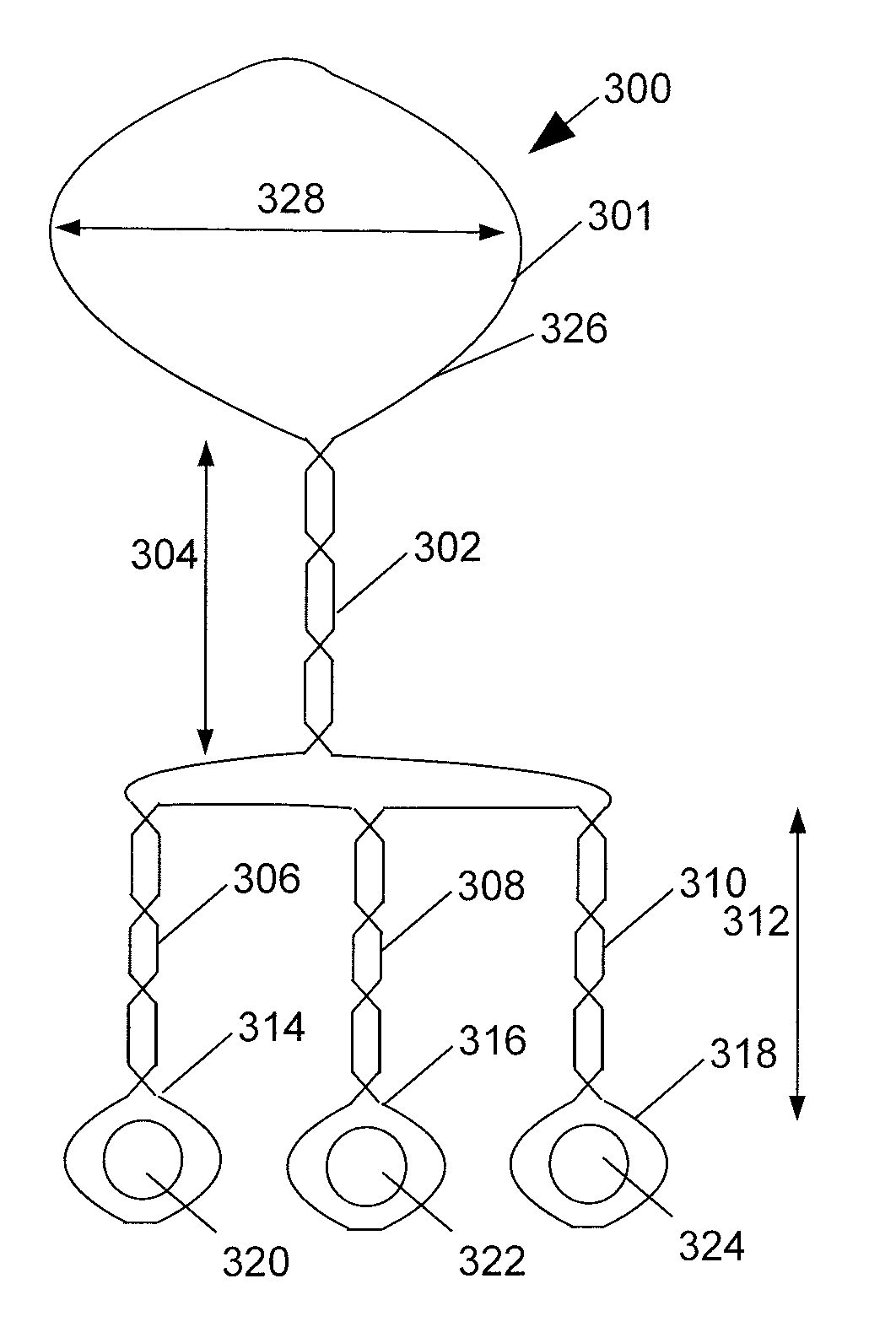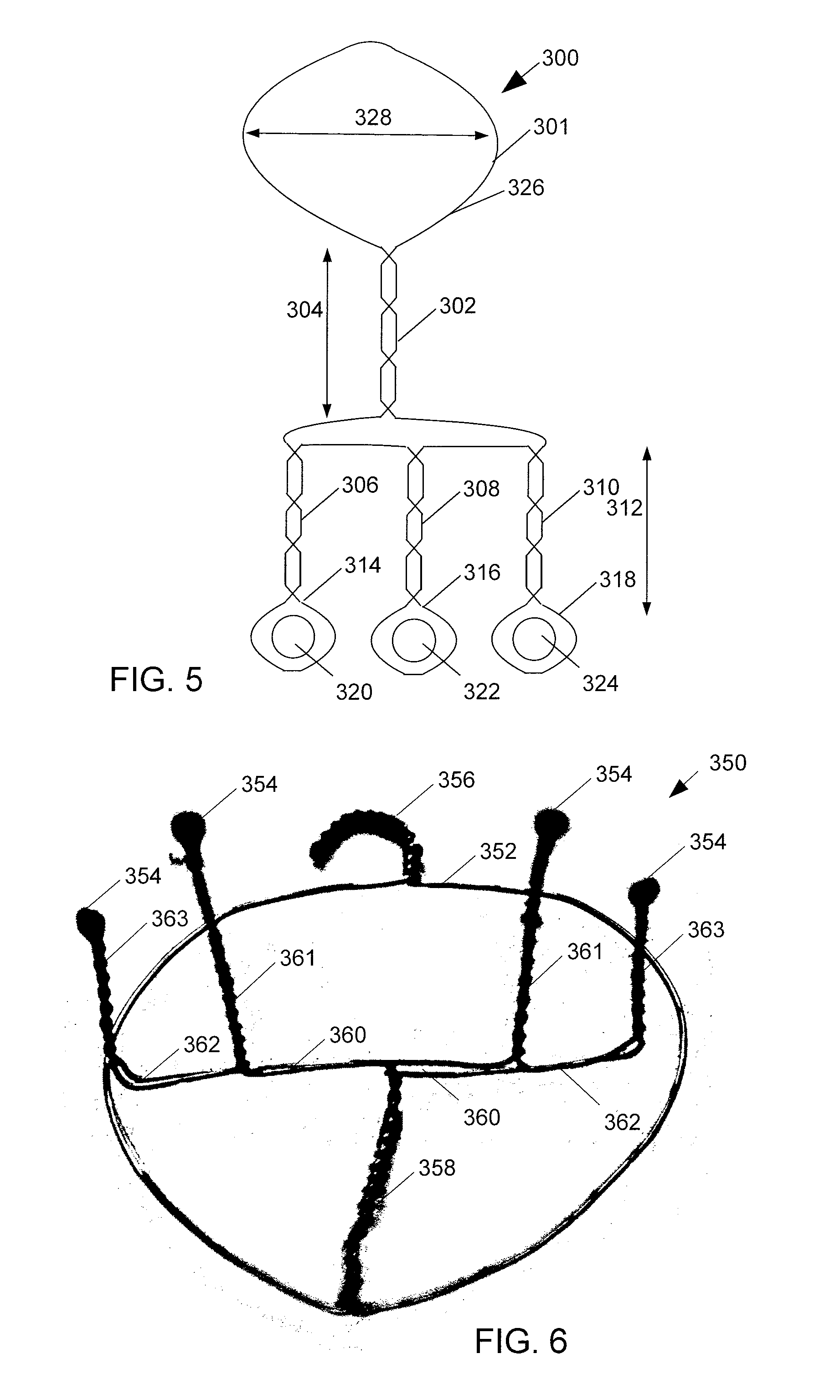System And Method Using Coupler-Resonators For Electron Paramagnetic Resonance Spectroscopy
a coupler resonance and electron paramagnetic resonance technology, applied in the field of electron paramagnetic resonance, can solve the problems of not always easy to ensure that biopsy samples are actually taken from tissue, not always easy to ensure that biopsy samples are taken from tissue, and not always easy to ensure that recalled history alone is not always a good indicator of exposure to toxic or radioactive materials and the corresponding need for treatmen
- Summary
- Abstract
- Description
- Claims
- Application Information
AI Technical Summary
Problems solved by technology
Method used
Image
Examples
embodiment 200
The embodiment 200 of FIG. 3 is formed similarly to that of FIG. 2, except that after forming the wire loop, it is divided and twisted into a first 202 twisted portion of a first length 204, a second 206 twisted portion of a second length 208 which may or may not be the same as the first length, a first sensor loop 210, a second sensor loop 212, and a coupling loop 214. The coupling loop 214 diameter 216 is about one centimeter as with the embodiment of FIG. 2, and the sensor loops 210, 212 are of diameter 218, 220 approximately half to one millimeter. A capsule 222, 224 of an EPR sensing material, such as LiPc and chosen as appropriate for studies to be performed with the coupler-resonator, is retained in each sensor loop 210, 212 as previously discussed.
embodiment 250
The embodiment 250 of FIG. 4 is formed similarly to that of FIG. 2, except that after forming the wire loop, it is divided and twisted into a first 252 twisted portion of a first length 254, a second 256 twisted portion of a second length 258, which may or may not be the same as the first length, a first sensor loop 260, a second sensor loop 262, and a coupling loop 264, and first and second twisted portions 252, 256. The coupling loop 264 diameter 266 is about one centimeter as with the embodiment of FIG. 2, and the sensor loops 260, 262 are of diameter 268, 270 approximately between half and one millimeter. A capsule 272, 274 of EPR sensing material, such as LiPc, is retained in each sensor loop 260, 264 as previously discussed.
While the embodiment of FIG. 4 is illustrated with two sensor loops, embodiments have been constructed with other numbers of sensor loops.
embodiment 300
The embodiment 300 of FIG. 5 is formed similarly to that of FIG. 2, except that after forming the wire loop 301, it is divided and twisted into a first 302 twisted portion of a first length 304, then further divided into a second, third, and fourth 306, 308, 310 twisted portion, or tine portion, of a second length 312 which may or may not be the same as the first length. The tine portions 308, 310, may be of unequal length 312, and lengths 304, 312, need not be calculated based upon the wavelength of the resonance. The wire loop 301 is further formed into first, second, and third sensor loops 314, 316, and 318. A capsule 320, 322, 324 of EPR sensing material such as LiPc is retained in each sensor loop 314, 316, 318 as previously discussed. The coupling loop 326 diameter 328 is about one centimeter as with the embodiment of FIG. 2, and the sensor loops 314, 316, 318 are of diameter approximately half to one millimeter.
While the embodiment of FIG. 5 is illustrated with three sensor l...
PUM
 Login to View More
Login to View More Abstract
Description
Claims
Application Information
 Login to View More
Login to View More - R&D
- Intellectual Property
- Life Sciences
- Materials
- Tech Scout
- Unparalleled Data Quality
- Higher Quality Content
- 60% Fewer Hallucinations
Browse by: Latest US Patents, China's latest patents, Technical Efficacy Thesaurus, Application Domain, Technology Topic, Popular Technical Reports.
© 2025 PatSnap. All rights reserved.Legal|Privacy policy|Modern Slavery Act Transparency Statement|Sitemap|About US| Contact US: help@patsnap.com



